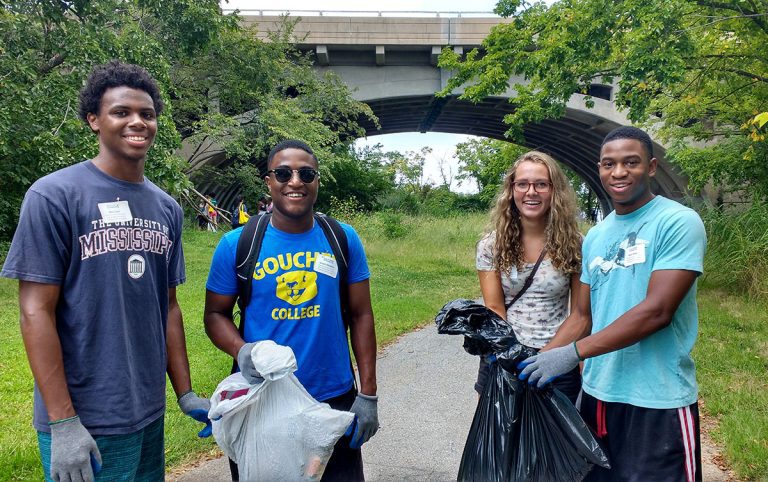Herring Run Nursery: Building Roots and Spreading Branches

At Blue Water Baltimore, we take our native plants seriously. This is not only because a landscape full of native plants can help reduce polluted runoff, but also for their other benefits: cooler summers, cleaner air, and more habitat for birds, butterflies, and bees. Consequentially, we work hard to operate Herring Run Nursery as great place to buy native trees, shrubs, vines, grasses, and wildflowers. 2011 was our busiest year ever at the nursery, and we are hard at work to ensure that 2012 is even better.
Some of the improvements should be immediately apparent: we will have more species of native plants for sale this year than we’ve had before. Many of the new plants are perennials we’re able to offer in partnership with Chesapeake Natives, a non-profit based in College Park that conducts research on the most local of native plants and hand-collects seed from those plants. Many species that are native to Baltimore are also native to many other parts of the country: by propagating plants from locally collected seeds, we can be sure that these particular plants (called local ecotypes) are particularly well adapted for our soil, climate, and wildlife. Some of these plants, like Cerastium arvense and Lespedeza frutescens, are very rarely offered in the nursery trade so we are excited at the chance to bring them to our customers. Look for these local ecotype plants in the Spring.

Another change that will be quite obvious is the addition of American Beauties native plants. This “branded” native plant program is the brainchild of nearby North Creek Nurseries and Prides Corner Farms in Connecticut. Launched as an effort to get more native plants into independent garden centers, the breadth of the plant offerings along with the highly informative brochures and website attracted us to participate. These plants have very in-depth plant tags, and the program has four Habitat Collections: these Songbird, Butterfly, Dry Shade, and Rain Garden plant lists and plans should make it very easy for even that newest native plant aficionado to start making their yards more wildlife friendly. Also, a portion of the proceeds from each American Beauties native plant benefits the National Wildlife Federation and their backyard habitat outreach.

Some of the other changes are less colorful but no less exciting. For instance, we are continuing to increase our use of root pruning containers in the production of our trees. Unlike conventional smooth-walled nursery pots, these RootMaker pots create a fibrous, non-circling root system. The root systems in these unusual-looking pots are more healthy, allowing the trees to grow better at the nursery and (most importantly) after planting in Baltimore’s parks, schools, and yards. We just started this transition in 2011, and it will take some time before all of our trees are grown in the superior RootMaker containers, but we are excited about this switch. Our goal is to grow trees with the highest quality root systems, and RootMaker pots are one of the tools we are using to do that.
We’ve got lots of other surprises planned for this year as well. We’ll be introducing some of those on the Herring Run Nursery Facebook page in the coming weeks, and we are already preparing the nursery for our first native plant sale of the year on April 22nd. There is lots to do, and we need the help of volunteers to make it happen. If you can spare a few hours to support the Herring Run Nursery, either on Wednesdays or at one of our Saturday “Seedling Shuffles”, email us for information on how to get involved.

